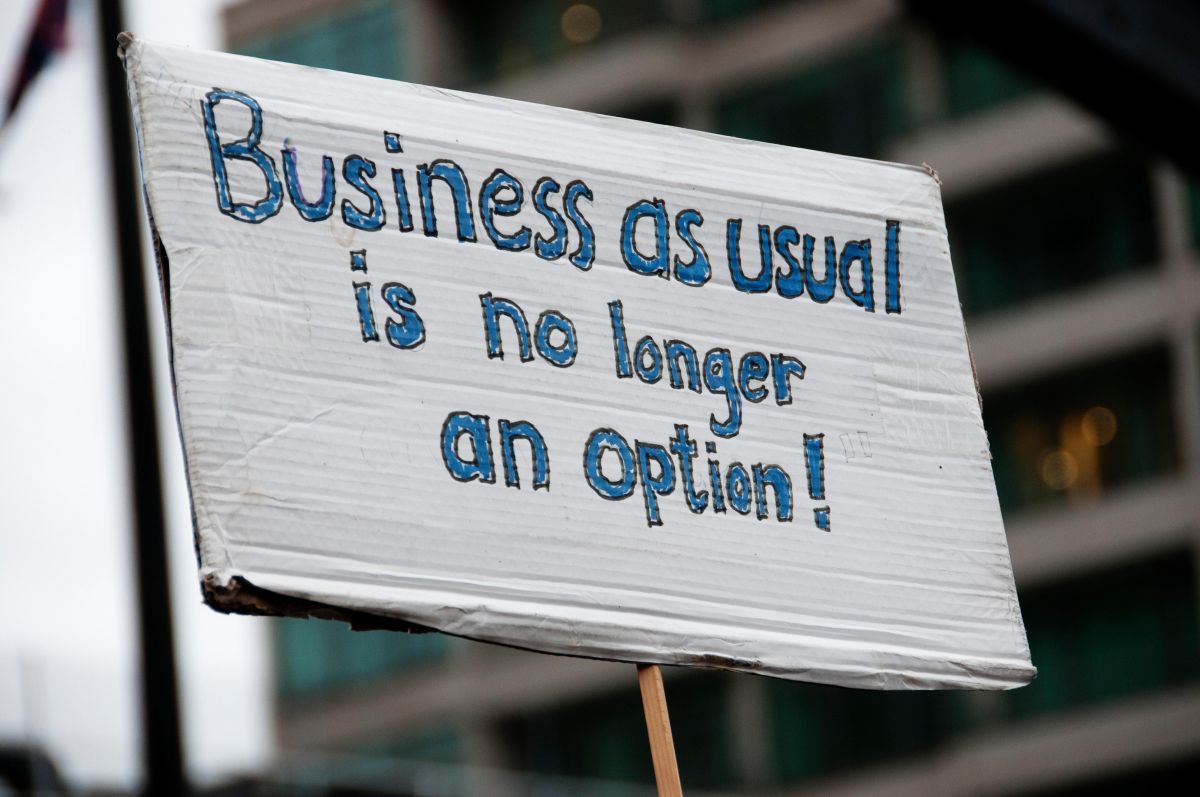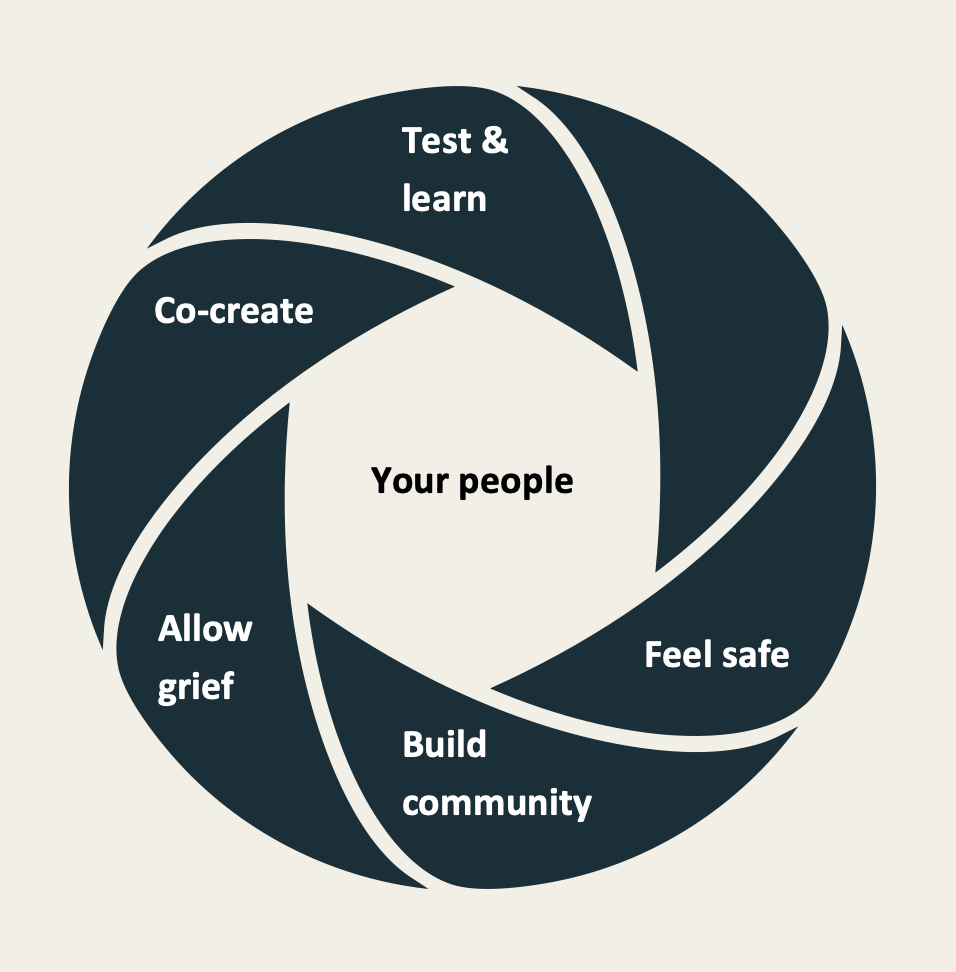
Lean Change
Putting your people first
If you’re frustrated with traditional Change Management approaches that impose top-down change on reluctant and overwhelmed employees – and are open to finding a more effective way – I can help. These approaches often leave leaders disheartened and employees disengaged, with little to show for the effort except exhaustion or burnout.
There’s a better way. It’s called Lean Change.
What is Lean Change?
Lean Change applies the principles and practices of Lean and Agile to change. It's about working with the people directly impacted by change to co-create and implement solutions to problems. It frees them up to experiment, test what works, and learn from it, while requiring them to listen to, and collaborate with, colleagues.
It helps bond teams around a common purpose, and taps into the collective wisdom of the organisation by enabling all voices to be heard. It does not require complex up-front planning, and moves people to meaningful action quickly.
Lean Change is best suited to organisations that operate in a fast-paced, complex, or uncertain environment, and that have found traditional change management isn’t working for them.
How I can help
As a change facilitator, I work with organisations from start-ups to corporates. I train, coach and support their people to feel competent and confident enough to make Lean Change principles and practices an integral part of their work, helping their organisations transform and adapt.
And I work with leaders to move on from a 'predict and control' mindset, and replace it with 'sense and respond', which encourages meaningful response to the reality of what's happening right now.
In 2024 I facilitated 67 workshops or Community of Practice sessions with clients using Lean Change principles and tools, both online and face-to-face.

Lean Change versus traditional change management
Traditional change management seeks to create an illusion of order. It places emphasis on detailed upfront plans and roadmaps; talks about ‘Change Playbooks’ (which are based on what has worked in other companies); uses step-by-step models that treat people as entirely logical and rational; and loves the idea of getting ‘buy-in’ for change initiatives. It thinks that change can be ‘delivered’.
Lean Change sees change as an ever-emerging process that cannot be managed. It understands that individuals and groups are complex, and that change is unpredictable. It accepts the reality of each situation as it is, and uses the difficulty it presents as a way for the organisation and its people to grow and transform. It believes that change needs to be facilitated rather than managed.
A murmuration of starlings is an example of a complex adaptive system –>
Lean Change views change as emergent
Lean Change treats all organisations as Complex Adaptive Systems. In these systems change is emergent i.e. the outcomes are not directly related to the inputs. This is counter to traditional step-by-step change management approaches where people imagine that a set of inputs will ‘deliver’ predictable outcomes.
Traditional change management seeks to create an illusion of order. It places emphasis on detailed upfront plans and roadmaps; talks about ‘Change Playbooks’ (which are based on what has worked in other companies); uses step-by-step models that treat people as entirely logical and rational; and loves the idea of getting ‘buy-in’ for change initiatives. It thinks that change can be ‘delivered’.
Lean Change sees change as an ever-emerging process that cannot be managed. It understands that individuals and groups are complex, and that change is unpredictable. It accepts the reality of each situation as it is, and uses the difficulty it presents as a way for the organisation and its people to grow and transform. It believes that change needs to be facilitated rather than managed.
A murmuration of starlings is an example of a complex adaptive system –>
Lean Change views change as emergent
Lean Change treats all organisations as Complex Adaptive Systems. In these systems change is emergent i.e. the outcomes are not directly related to the inputs. This is counter to traditional step-by-step change management approaches where people imagine that a set of inputs will ‘deliver’ predictable outcomes.
I really feel compelled to write to you and express huge gratitude for the work on Lean Change across all of HR.

Change is the only constant
Heraclitus (535–475 BC), was a Greek philosopher who viewed the world as constantly in flux. He expressed this in sayings like "Everything flows" and "No man ever steps in the same river twice".
For some organisations this notion is deeply unsettling. For them the concept of Business as Usual (BAU) is much more reassuring. It gives them a comforting feeling that there's a static norm that they'll return to once change is complete, and that ‘change’ is something that happens separate from BAU.
The Wheel of Change (see below) puts your people at the centre and consists of six interdependent ideas that are focused on supporting them to embrace change as the norm.

The Wheel of Change
A visual representation of how I work. Sometimes secretly.

Feel safe
Psychological safety is not the absence of threat; it is the presence of connection.
Dr. Gabor Maté, Author
Build community
I am because we are.
Ubuntu African philosophy
Allow grief
All change is loss, and all loss requires mourning.
Harry Levinson, Professor, Harvard Graduate School
Co-create
Great things in business are never done by one person; they're done by a team of people.
Steve Jobs, co founder and CEO of Apple Computers
Test & Learn
It is only through experiment that we learn and grow.
Isaac Stern, violinist
The blank segment is deliberate. It represents emergence. The possibility of something yet to be born. Sometimes called the fertile void, it is from this space – which is always uncomfortable – that all change emerges. In the Osho Zen Tarot deck this is called ‘No-thingness’. In astrology it is known as Black Moon Lilith.
